Today's Tidbit... Ye Olde Statue of Liberty Play
The Statue of Liberty play is nearly as old as football itself. Named after the statue President Grover Cleveland dedicated in New York Harbor on October 28, 1886, it is among the oldest plays still in use today. The first documented connection between the Statue of Liberty and football came in November 1900, when Pop Warner and the Carlisle football team visited Lady Liberty the day after losing to Columbia.
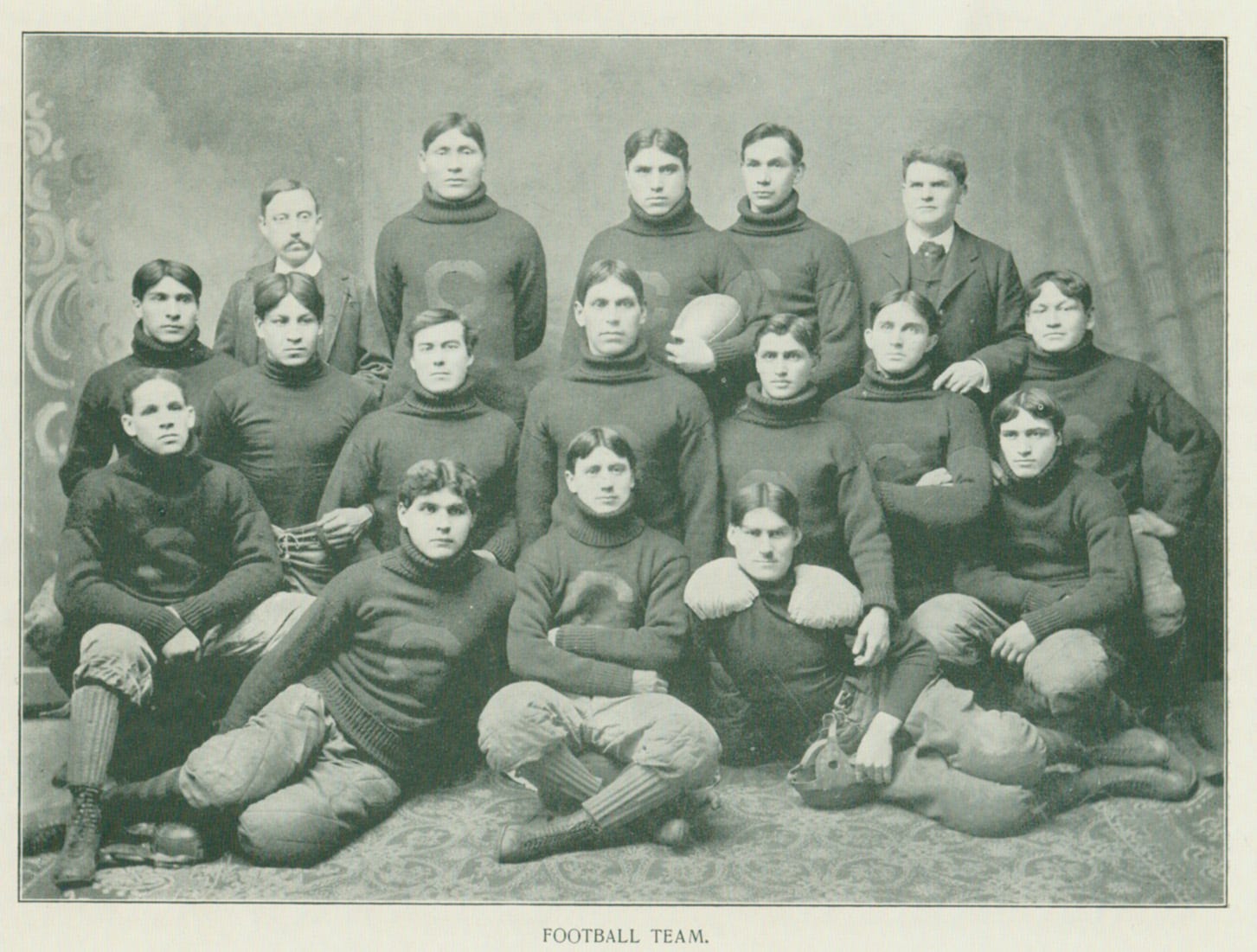
Tradition has it that Amos Alonzo Stagg ran a version of the play with Clarence Hershberger, the team's punter and kicker who played for Chicago from 1894 to 1898. Others say Fielding Yost invented the play during his coaching days at Ohio Wesleyan in 1897, though Stagg and Yost may have called it by another name.
Another group suggests the play arose when Ray Morrison quarterbacked Vanderbilt from 1908 to 1911. Regardless of who invented this outstanding play, it was not until 1913 that it was named in newspaper articles when Geneva ran it against Allegheny. Redlands did the same against Occidental on the same weekend. Even then, the first mention and others of the period refer to the "old Statue of Liberty play" or similar, suggesting the Statue of Liberty had been around for a while, predating Ray Morrison’s time on the gridiron.
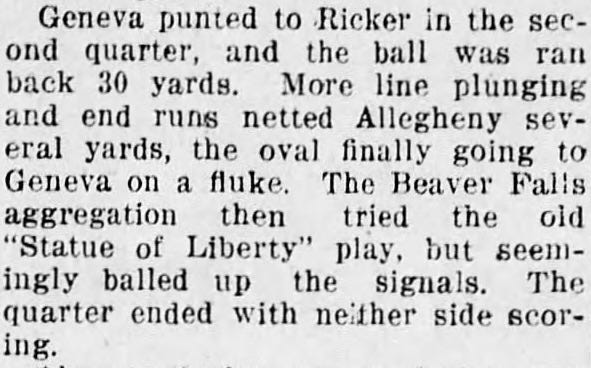
While the Statue of Liberty play today is typically a fake forward pass, it originated as a fake punt. Rather than an end circling behind and grabbing the ball held behind the passer's back, the end took the ball from the punter. It worked well as a fake punt since teams in that era often punted on early downs, and end-around and tackle-around plays were in every team's playbook.
The play enjoyed a resurgence in the 1930s, perhaps due to the popularity of the spinner and other misdirection efforts in backfields. One of the more famous applications came when Fordham visited Chapel Hill in October 1937. Fordham, which ended the season ranked #3, tied Pitt 0-0 earlier in the season for the third year in a row and was 3-0-1 entering the game against #15 North Carolina.
Fordham's first score came on a 26-yard Statue of Liberty run from a fake pass that finished an 88-yard first-quarter drive, providing all the points needed for Fordham’s 14-0 win.
The play gained notoriety as part of a syndicated column featuring drawings and explanations of key plays of the 1937 season. Fordham's version went to Kazlo, their left wing, who circled right and took the ball from Granski, his left-handed quarterback.
As a trick play, the Statue of Liberty also fit the style of Georgia Tech coach Bill Alexander, who was perfectly willing to employ zany approaches such as the reverse quarterback technique.
Alexander figured that if running an end around off a pass fake was a good idea, then running a trap off the fake end around was an even better idea. Alexander's play, diagrammed in the unbalanced Single Wing below, looks like a classic Statue of Liberty with the right-wing circling to the left. However, rather than give the ball to the right wing, the tailback keeps the ball and follows the quarterback’s trap block on the defensive tackle. (Someone out there runs a similar play today with an H back handling the trap.)
The Statue of Liberty play is less common today, though it still has occasional success. Boise State famously pulled it off against Oklahoma in the 2007 Fiesta Bowl to give them the win.
Of course, what goes around comes around, including ye olde end-around, so if we are lucky, we'll see Lady Liberty standing proud, holding the torch for a winning team in the upcoming college football playoffs.
Football Archaeology is a reader-supported site. Click here for options on how to support this site beyond a free subscription.



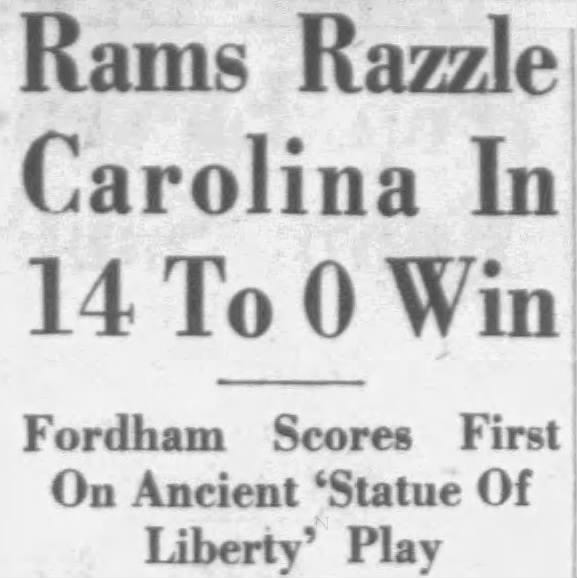
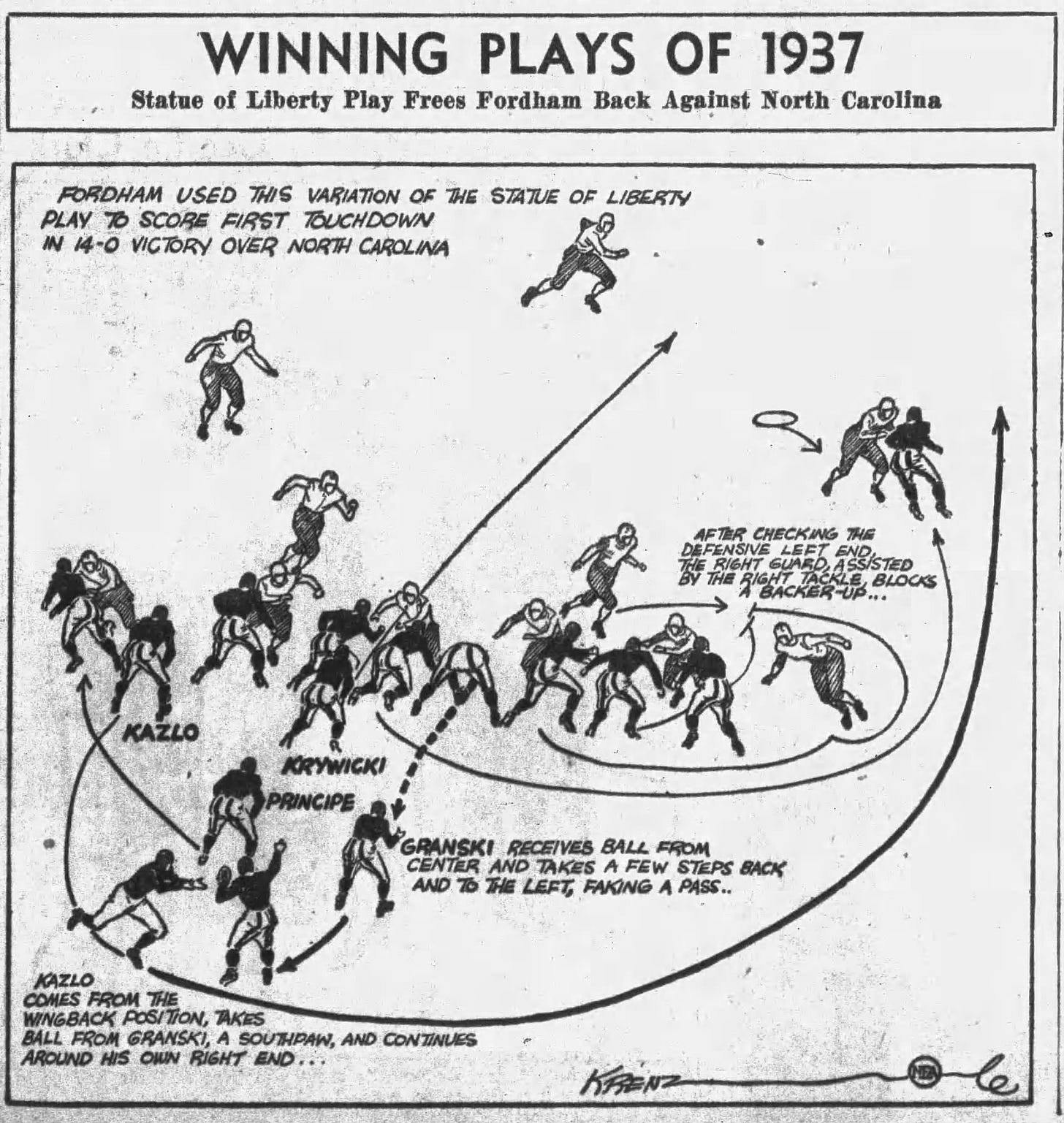
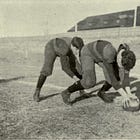
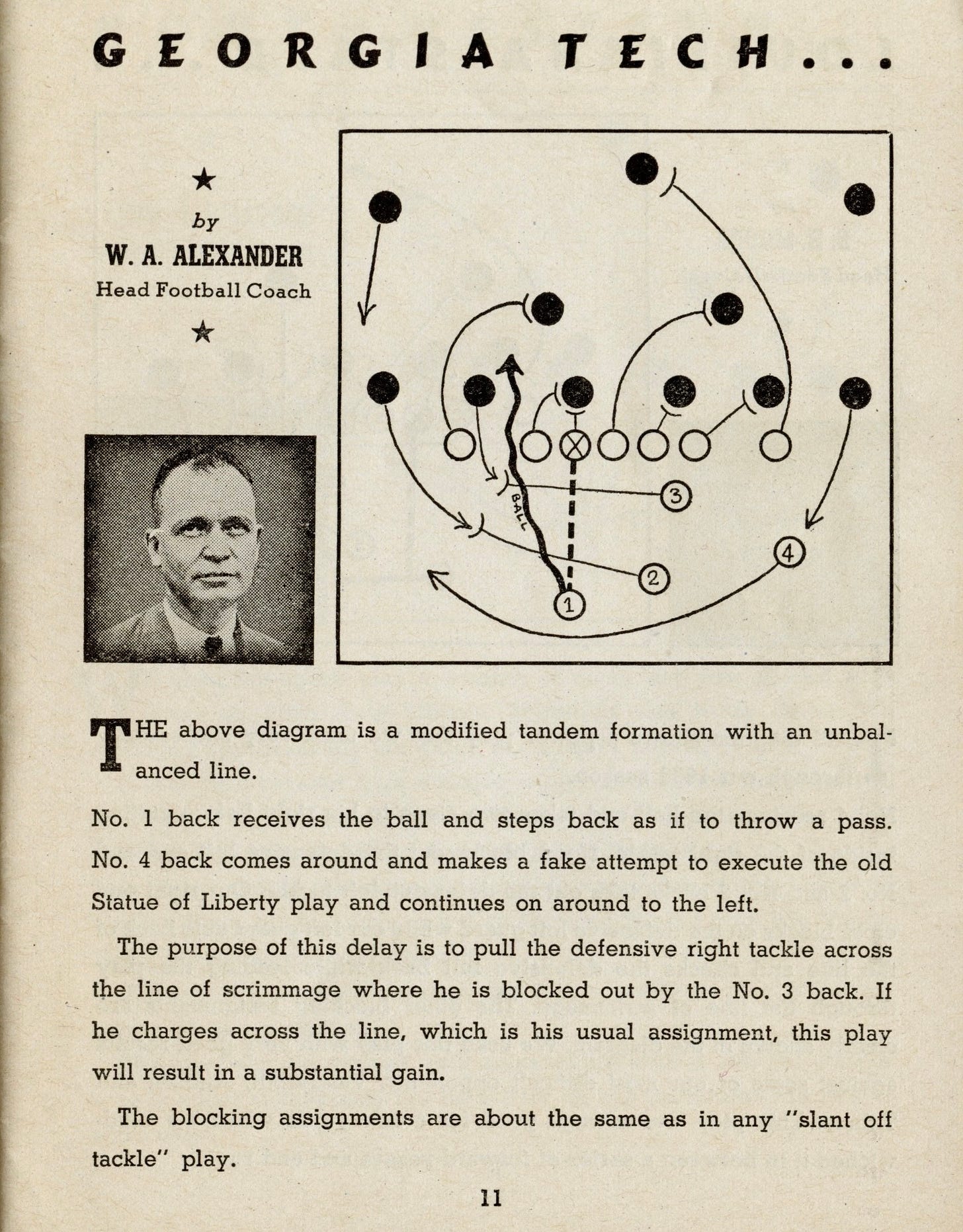
We in Western PA and Eastern Ohio like the idea of Geneva vs Allegheny game as being the first to use it.